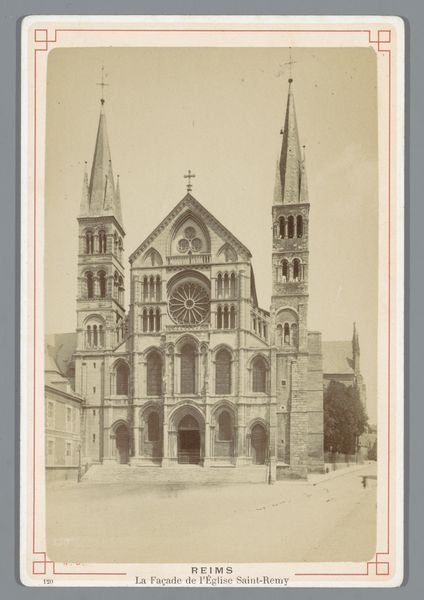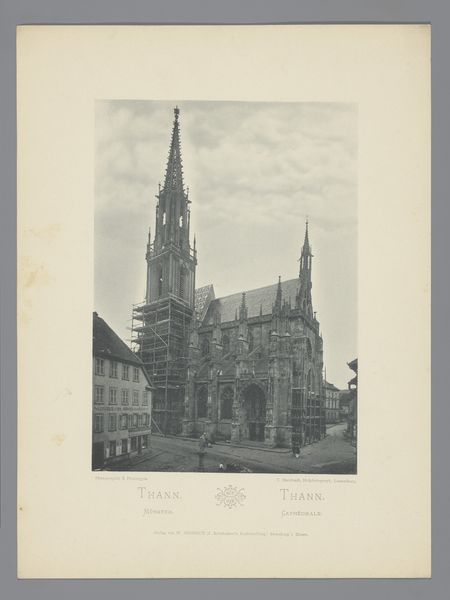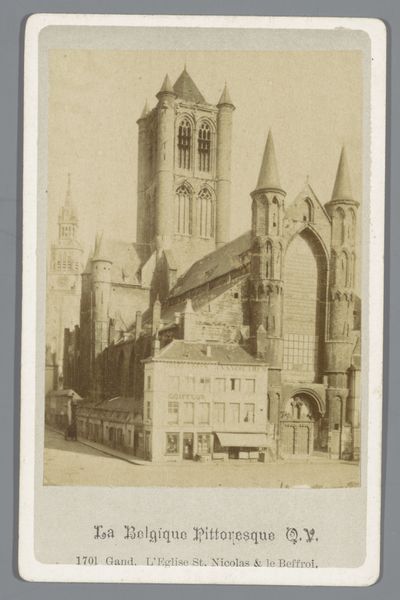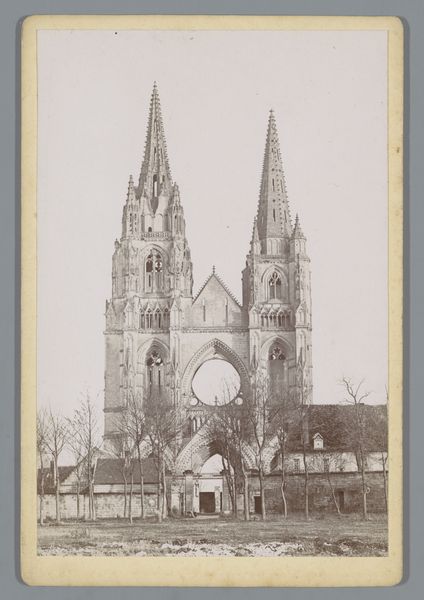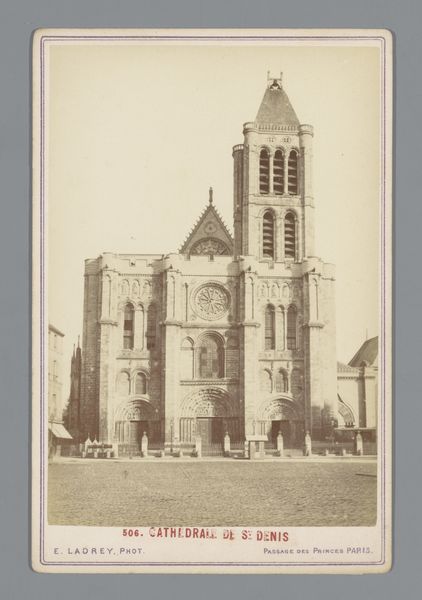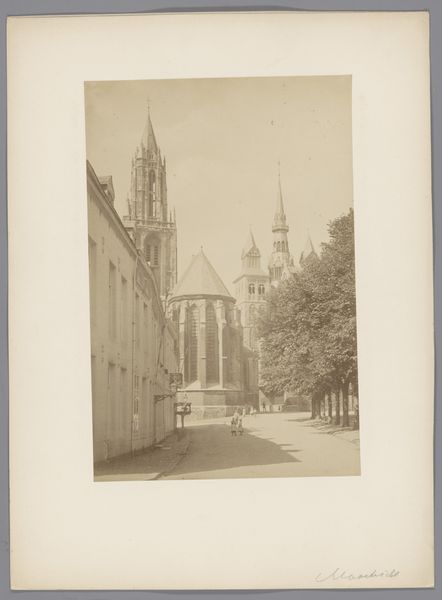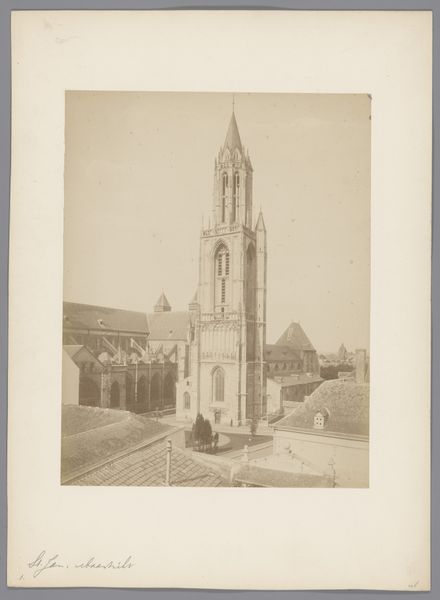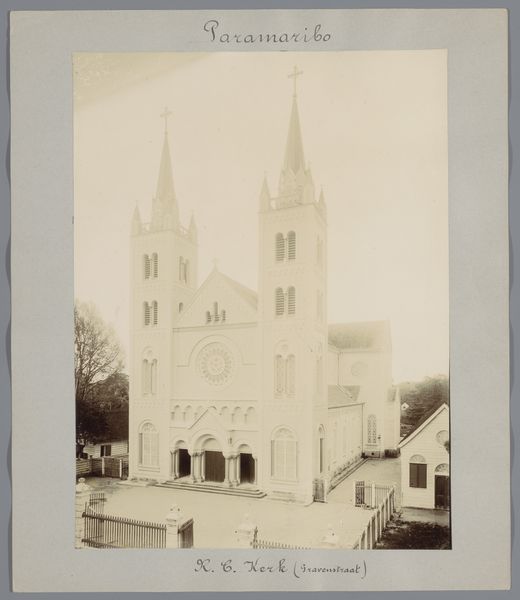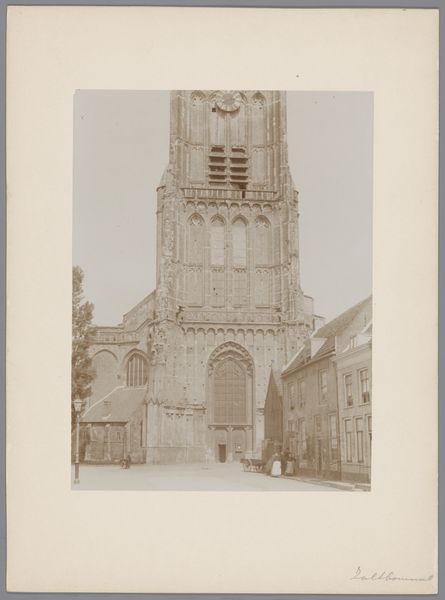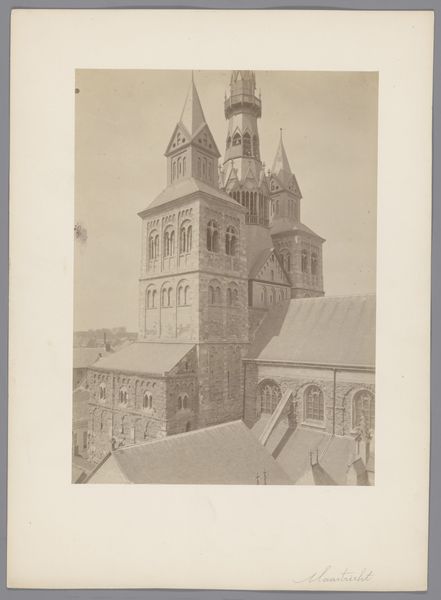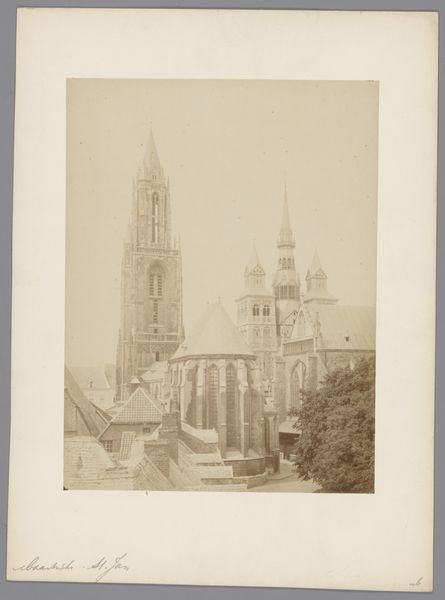
photography, architecture
#
landscape
#
photography
#
19th century
#
cityscape
#
architecture
Dimensions: height 356 mm, width 269 mm
Copyright: Rijks Museum: Open Domain
Curator: The artwork before us offers a striking view of the Saint-Étienne Church in Caen. Dating back to the latter half of the 19th century, this photographic print resides here at the Rijksmuseum, an institution that, from its inception, has played a crucial role in shaping national identity through art. Editor: It feels imposing, almost severe. The light, diffused and even, highlights the stone's texture, but also flattens the space. The towers dominate; their verticality seems to compress everything beneath them. Curator: Indeed. Consider how photography, then still relatively new, allowed for widespread documentation of architectural marvels like Saint-Étienne. Its creation and subsequent dissemination would shape public perceptions, imbuing the church not merely as a place of worship, but as a potent symbol of civic pride and national heritage. Editor: And the photographer clearly understands how to use composition to convey this power. Notice how the geometric lines of the buildings lead your eye upward, reinforcing the church's monumental scale. The light seems almost to emanate from the facade. Curator: And beyond aesthetics, one can interpret the presence of this photograph within the Rijksmuseum as a commentary on institutional authority. Displaying photographs of French architecture in a Dutch national museum presents a particular, almost colonial, point of view, subtly suggesting the appropriation and control of cultural memory. Editor: That’s interesting. For me, the restricted palette, a kind of greyscale punctuated with only minute textural variations, evokes an austere mood. It’s not romantic; it feels more analytical. More like the precision demanded by architectural drawings. Curator: Perhaps the analytical eye reflects the period's scientific fervor. The ability to reproduce reality objectively through photography held tremendous sway and allowed people of different means to learn and marvel at faraway locations. Editor: Well, the image makes you think about space, doesn’t it? The photographic process allowed for a precise translation of what could be experienced when present, emphasizing our perception of place. I feel as though I'm witnessing a critical moment for art history when photography was really pushing back what painting could accomplish, which, of course, shifted our understanding of painting at the time. Curator: A great point! These historical tensions make me think more deeply about the church as both artifact and emblem, about the past and the present... Editor: I agree; and about form, light and composition...
Comments
No comments
Be the first to comment and join the conversation on the ultimate creative platform.
